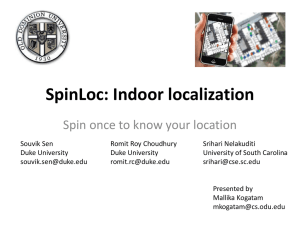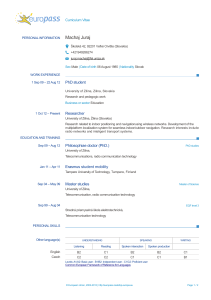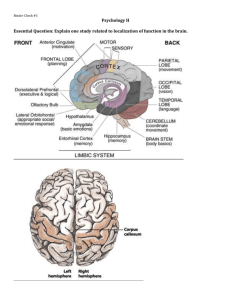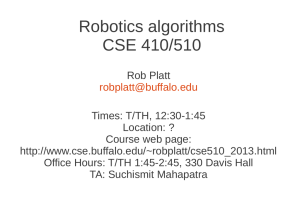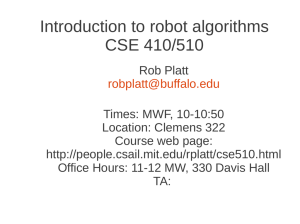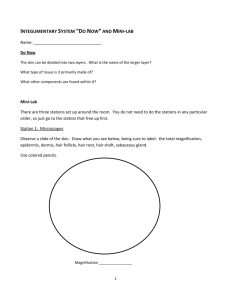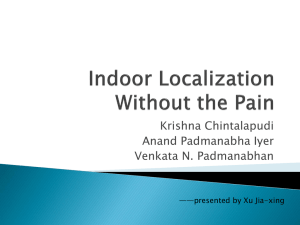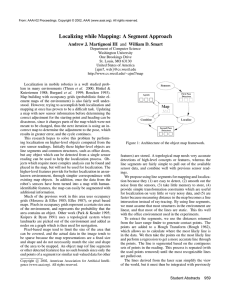Indoor Localization without the Pain
advertisement
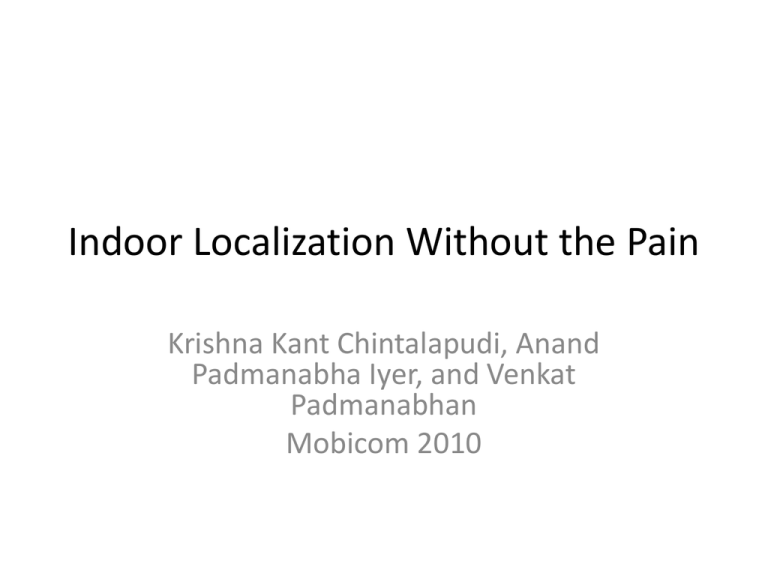
Indoor Localization Without the Pain Krishna Kant Chintalapudi, Anand Padmanabha Iyer, and Venkat Padmanabhan Mobicom 2010 Motivation from existing works • Schemes requiring specialized infra: Active Badge, Cricket, Active Bat, etc. requires infrastructure deployment • Schemes requiring RF signal maps: RADAR, Place Labs, etc. takes too much time; laborious! • RF propagation model based (e.g., TIX, ARIADNE) much less efforts than RF map; but still need a lot of work to fit the models Motivation from existing works • Ad hoc localization (multi-hop wireless comm from known wireless anchor nodes) requires enough node density to enable multi-hopping • Robot navigation (called Simultaneous Localization and Mapping, SLAM where a robot builds a map and determine its location) requires special sensors (e.g., ultra-sound, LADAR, etc.) • Indoor navigation (similar to robot navigation) – mostly using compass (or gyroscope) + accelerometer requires an indoor map for accurate localization (+ accelerometer and compass error must be accommodated) • Question? Can we do indoor localization without such limitations?? Key Idea: Localizable? • Localizable (globally rigid) – Can determine unique positions (w/o distorting measured distance); possible to rotate/flip, though • Idea: if enough distance measurements are available, we can “localize” devices/APs; orientation can be opportunistically fixed using external input (e.g., GPS feed when entering a building) Not localizable (rigid) Localizable Approach • RF propagation model between i and j – pij = Pi – 10*ϒi log dij + R • pij: recv signal strength, dij: distance, Pi: tx power, ϒi: path loss – dij = 10 ^(Pi-pij)/10 ϒi • Equations: – Unknowns: m APs + n locations • 4 unknown variables for each AP: location (x, y), Pi, ϒi • 2 unknown variables fro each loc: (x, y) • Need to solve a set of “over-determined” equations – N: number of equations – Min JEZ where Approach • Optimization – Gradient methods: tend to stuck at local min – Genetic methods: OK performance • Hybrid approach: Genetic + Gradient Decent.. – Genetic: mutation based.. • How to reduce state space? Floor size, …. • Receiver gain problem: Relative difference
